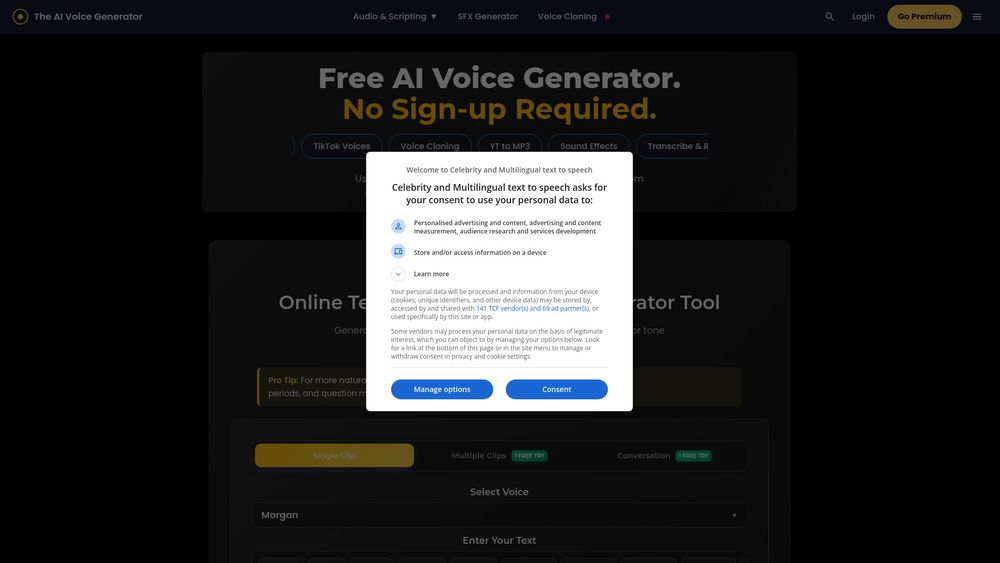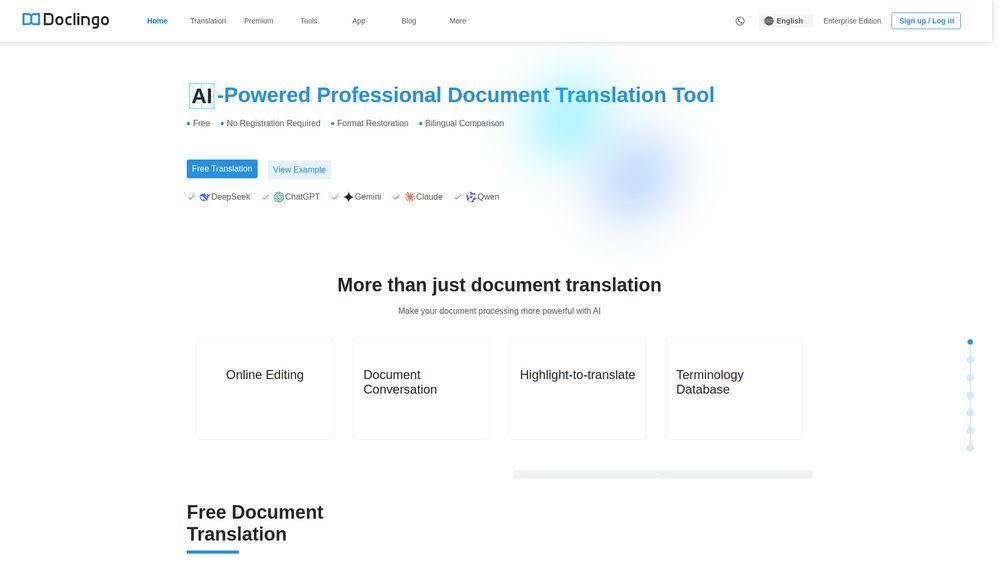What is Omnilingual Asr
Omnilingual Automatic Speech Recognition (ASR) unifies speech recognition across over 1,600 languages using AI, specifically leveraging wav2vec-style self-supervision, LLM-enhanced decoders, and balanced multilingual corpora. It aims to provide a single deployment that handles thousands of languages, reducing operational costs compared to maintaining per-language models. This technology is crucial for low-resource communities, enabling access to speech technology with minimal fine-tuning data. It also supports multitask decoders for applications like global captioning, multilingual assistants, and multi-language call analytics.
How to use Omnilingual Asr
- Define target languages & domains: List core languages, accents, and jargon. Map them to available datasets and set Word Error Rate (WER)/Character Error Rate (CER) targets per language.
- Choose the omnilingual backbone: Select from open-source options like Whisper, MMS, or OmniASR, or managed APIs from cloud providers depending on governance and latency needs.
- Fine-tune or configure: Use frameworks like NeMo or Transformers to fine-tune with domain transcripts, or upload custom vocabulary/acoustic data to cloud services for automatic adaptation.
- Integrate language identification: Utilize tools like MMS LID or Whisper's language tokens to auto-route segments, improving accuracy on mixed-language media.
- Deploy & monitor: Containerize inference with GPU scheduling or connect to cloud APIs. Log confidence, latency, and WER per language, and alert on performance drifts.
- Iterate with feedback: Collect corrections from human reviewers or user edits, retrain models periodically, and publish updated language coverage dashboards.
Features of Omnilingual Asr
- Language-Adaptive Encoders: Utilizes models like wav2vec 2.0, Conformer, and MMS that share speech representations across languages, allowing less-resourced languages to benefit from data-rich ones.
- LLM-Decoders: Employs Transformer decoders fine-tuned as language models to convert acoustic states into grammatically rich text and manage translations.
- Few-Shot Extensibility: Can extend coverage to over 5,000 languages using in-context prompts with minimal recordings, facilitating community-driven expansion.
- Integrated Language ID: Models can automatically detect languages, with systems like Whisper emitting language tokens upfront and others offering dedicated LID classifiers.
- Balanced Training: Employs sampling strategies across diverse corpora to narrow WER gaps between high-resource and long-tail languages.
- Deployment Flexibility: Available as open-source checkpoints or through cloud APIs, offering features like diarization, translation, and streaming capabilities.
Use Cases of Omnilingual Asr
- Global captioning and transcription services.
- Development of multilingual virtual assistants and chatbots.
- Analysis of multi-language call center recordings.
- Enabling speech technology access for low-resource language communities.
- Cross-lingual speech translation applications.
FAQ
- How does omnilingual ASR differ from multilingual ASR? Omnilingual ASR targets every language simultaneously through shared encoders and language-agnostic decoders, whereas multilingual models typically support a finite, predefined subset of languages.
- Which models currently lead omnilingual ASR accuracy? Meta's MMS and OmniASR models are noted for low WER across long-tail languages, while Whisper serves as a versatile open baseline, and Google USM leads proprietary services.
- Can omnilingual ASR auto-detect languages? Yes, systems like Whisper output language tokens, MMS includes a LID model, and cloud APIs perform automatic detection.
- How much data is needed to add a new language? OmniASR demonstrates adaptation with a few hours of labeled audio or even few-shot prompts due to universal encoders. More data improves CER stability.
- Does omnilingual ASR support translation? Yes, models like Whisper and OmniASR's LLM decoder can perform speech-to-text translation.
- How is streaming handled? Cloud providers offer streaming endpoints, and open models can be adapted for streaming through chunking techniques.
- What about hallucinations? Hallucinations can be mitigated through techniques like constrained decoding, confidence thresholds, and enhanced model variants trained on extensive real-world audio.
- Are there licensing constraints? Open-source models like Whisper (MIT) and MMS/OmniASR (Apache-2.0) permit commercial use with attribution, while cloud APIs have usage-based pricing and specific terms.
- How to evaluate omnilingual ASR fairly? Evaluation should use balanced benchmarks like FLEURS and Babel, reporting WER per language and macro averages, with a focus on low-resource language performance.
- What future trends will shape omnilingual ASR? Future trends include tighter LLM-ASR fusion, mixture-of-experts encoders, and the expansion of community-sourced corpora to increase language coverage.




